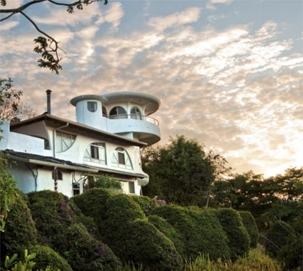Café Rosa Blanca: The World’s Tastiest, Award-Winning, First-Place Holiday Treat?

For nearly 200 years, coffee has been both source and symbol of Costa Rican prosperity – the crop that built a nation. Our nation. And here at Finca Rosa Blanca, coffee has long been our tradition, too.
High in Costa Rica’s Central Valley, on the fertile slopes of Barva Volcano and Poás Volcano, we turned a once-muddy coffee field turned motocross field into a thriving farm: Finca Rosa Blanca is home to 30 acres of certified organic coffee. We use no agrochemicals, no pesticides, no herbicides, and no fungicides; instead, we fertilize our soil with rich compost and the protection of native shade trees. And they make for some great coffee.
And now, we are so honored to share that the World Coffee Challenge has recognized both our efforts and our achievements. To the tune of five first place awards, including the Best Coffee in Central America!
So, ‘tis the season to suggest, could this be 2022's tastiest, most aromatic holiday treat, stocking stuffer, or gift you give this year? We think so!

The World Coffee Challenge 2023: Café Rosa Blanca Wins Five First Place Awards!
That’s why we’re so excited to announce that Café Rosa Blanca recently made a showing at the World Coffee Challenge, where the pros – that is, the Q Graders – awarded us with top place in five categories; Best Organic Coffee, Best Sustainable Coffee, Best Fermented Coffee, Best Washed Coffee, Best Coffee in Central America– high accolades, considering the delicious company we keep!
This award-winning fermented “Koji” variety is one that we will offer for sale to all of you in 2024 (while supplies last).

A Taste of Costa Rica: From Our Farm to Your Stocking
What goes into your favorite cup of coffee?
At Finca Rosa Blanca, there are so many factors: shade-grown, organic, high-altitude, hard-bean coffee grown in fertile volcanic soils: Arabica varietals that include the rich and flavorful Caturra and Obatá, with some guest appearances from Catuaí, Marseilles, and the world-famous Gesha (aka Geisha) coffee.
Here, coffee farming is symbiosis: The plants, trees, and animals that live at Finca Rosa Blanca also nourish and protect our coffee fields. For example, our native forest is both home to 145 bird species – hey there, coffee-loving birders! – and shades our farm, producing nitrogen for our coffee while creating biological corridors for the wildlife of Costa Rica.
The result is shade-grown (= environmentally sound), hard-bean (= denser beans with superior consistency and flavor), certified organic (Kiwa BCS), and certified sustainable (both Rainforest Alliance and ICAFE) Arabica coffee that, most importantly, tastes great.
Yep, we love our coffee. And we’re confident you will, too. Café Rosa Blanca is available this holiday season locally in Costa Rica.

Coffee Cupping 101
Want to know what goes into professional coffee cupping, like that of the World Coffee Challenge?
Let’s start here: Truly, the best cup of coffee is the cup you love. So the challenge is to discover what you love!
In other words, what commonalities draw you both to Coffee A (origin: Costa Rica) and Coffee B (origin: Ethiopia)? Because your palate’s happy place is found at the crossroads of these unifying flavors and characteristics.
Coffee tasting, aka cupping, is the key to understanding your favorite brews and to discovering more coffee you’ll love. And it all starts with your mouth – with your body’s built-in coffee flavor codebreaker.
When you taste coffee, focus on its four principal qualities (as cuppers do):
- Body: Thickness or heaviness, as felt on your palate during consumption
- Acidity: Pleasant tanginess when the coffee first hits your palate
- Flavor: Ranges from mild to rich and is the most subjective of coffee characteristics
- Aroma: Powerful evocative smell that enhances a great cup of coffee
While you can taste these flavors throughout, they’ll each provoke different sensations in different parts of your mouth. So, isolating each part and then focusing on a single quality as you experience it in that part, is the foundation of coffee tasting. Here’s how to do it:
Sweetness: Seek out sugar, caramel, honey or similar flavors toward the front of your tongue. For Finca Rosa Blanca coffee and on our chart, reference flavors are chocolatey, fruity, and sweet.
Bitterness: Easily located on the back of your tongue, coffee’s bitterness is easy to identify and describe, as it comes from caffeine and burnt (= roasted) compounds. For Finca Rosa Blanca coffee and on our chart, reference flavors are leather, lemongrass, and tobacco.
Acidity: Not to be confused with bitterness, acidity is a highly sought-after quality in coffee – the sparkling and most desired element, like a squeeze of lemon on a hot day. Coffee’s acidity activates the salivary glands – focus on the back/sides of your tongue after swallowing – and sends sensation throughout the laterals of your mouth.
Those are the basics of coffee cupping. So go ahead, brew another cup and give it a whirl. Or rather, a slurp. Make it a loud one. Don’t be shy and please, let us know how it goes!
